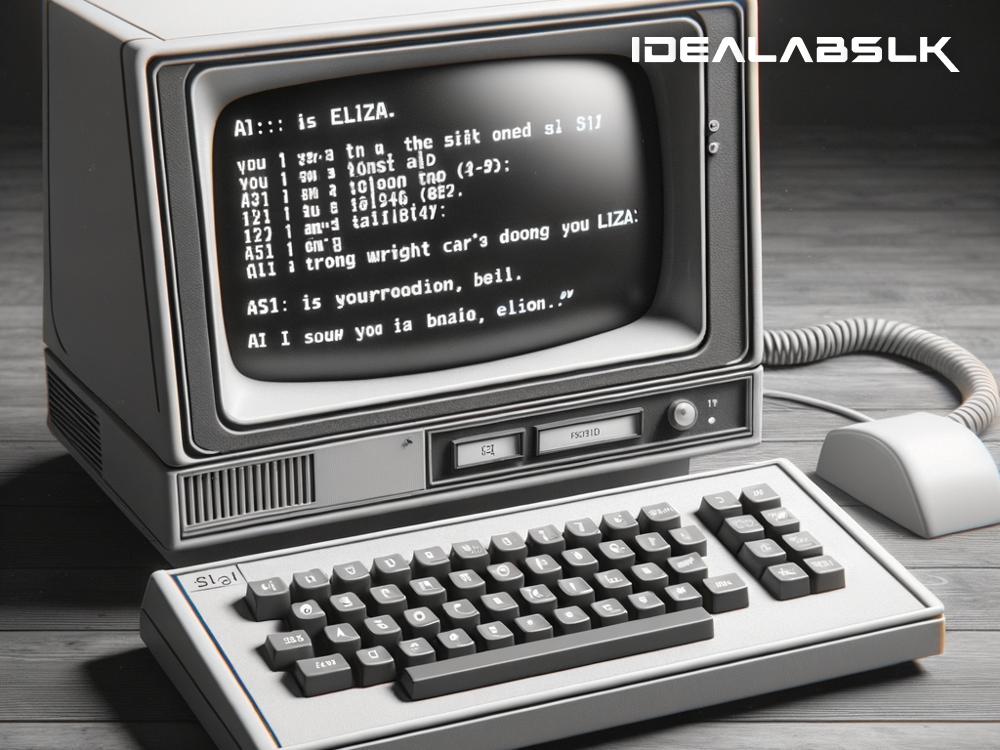Title: Exploring the Roots: ELIZA and the Dawn of Chatbots
Long before Siri, Alexa, or any of today’s chatbots became household names, there was ELIZA - a name that might not ring a bell for many but is crucial to the lineage of artificial intelligence. It's amazing to think that the journey into AI conversation started over half a century ago! This journey brings us back to the 1960s, a time of great innovation and the birth of ELIZA, the world's first chatbot. Let's dive into this fascinating piece of tech history and understand the humble beginnings of AI interaction.
Who Was ELIZA?
Developed in 1964-1966 by Joseph Weizenbaum, a computer scientist at MIT, ELIZA was not a "who" but a groundbreaking "what." This early chatbot program was named after Eliza Doolittle, a character from George Bernard Shaw's play "Pygmalion," who undergoes a significant transformation. Similarly, ELIZA was about experimenting with the transformation of human-computer interaction.
ELIZA's main function was to mimic a conversation with a human, primarily using a script called "DOCTOR." The DOCTOR script was based on the conversational style of a Rogerian psychotherapist, who essentially parrots back what the patient says in the form of a question. For example, if a user typed, "I am feeling sad," ELIZA might respond, "Why do you think you are feeling sad?" This simple yet effective form of interaction was groundbreaking.
How ELIZA Worked
The magic behind ELIZA was in its simplicity. It utilized pattern matching and substitution methodology, where it recognized certain keywords or phrases and responded according to its script. The beauty of ELIZA was that it didn't understand the conversation. Yet, it gave an illusion of understanding by cleverly crafting responses based on the input it received. This illusion was convincing enough that some people attributed human-like feelings to ELIZA, despite Weizenbaum insisting that ELIZA had no understanding or consciousness.
The Importance of ELIZA
ELIZA's significance goes beyond its technical achievements. It sparked a conversation about the potential for machines to emulate human-like conversations. Its existence raised philosophical questions about AI and the nature of intelligence, questions that still resonate today. Furthermore, it laid foundational work for the development of natural language processing (NLP) and demonstrated the potential for computers in psychotherapy and other fields.
ELIZA's impact can also be seen in how it influenced the public and academic perspectives regarding human-computer interaction. For many, ELIZA was the first glimpse into a future where talking to a machine could feel somewhat natural. It paved the way for the myriad of chatbots and virtual assistants that crowd our digital landscape today.
Beyond ELIZA: The Evolution of Chatbots
Following ELIZA, the development of chatbots continued to evolve, becoming more sophisticated with advancements in technology and AI. From the rule-based systems of the past to the machine learning algorithms of today, chatbots have come a long way. Modern chatbots can handle complex queries, understand context, learn from interactions, and even convey emotions to some extent.
Today, chatbots serve various purposes, from customer service agents and personal assistants to mental health advisors and educational tools. They're everywhere, making our digital lives more convenient, and it all started with ELIZA.
Final Thoughts
ELIZA's creation marked a significant milestone in the journey towards intelligent machines. While we've come a long way since the days of DOCTOR scripts, ELIZA's legacy lives on in the chatbots and AI systems that now permeate our lives. It's a testament to human curiosity and innovation—a first step towards understanding how machines might not only compute but also converse.
As we continue to explore the possibilities of AI and machine learning, it's essential to remember the roots of this technology. ELIZA may have been a simple program by today's standards, but it was a beacon of possibility for AI interaction. It reminds us that at the heart of technological advancement is the desire to connect, understand, and make our lives a little bit easier, one conversation at a time.

